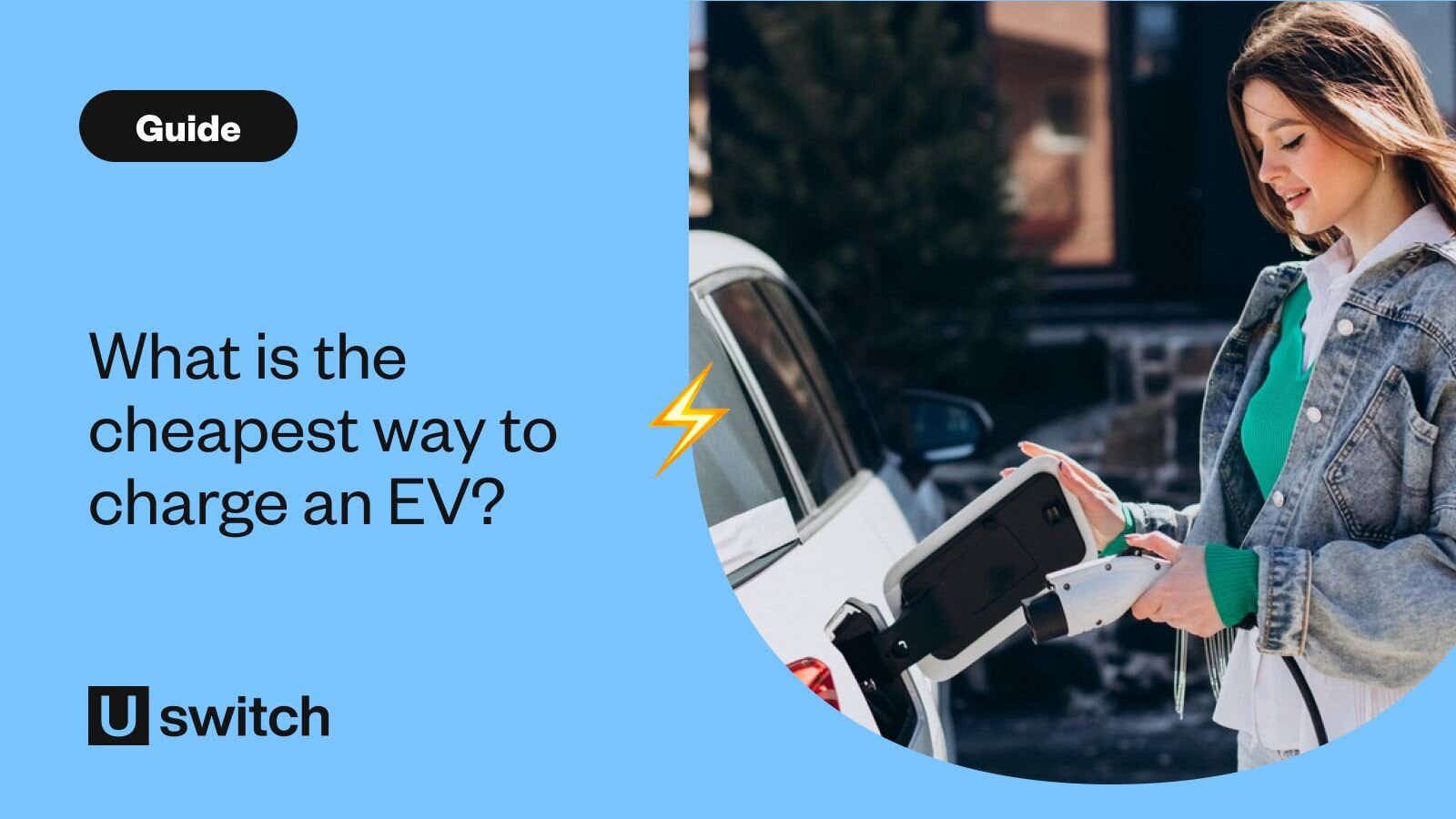What is the cheapest way to charge an EV?


Public charging: convenience at a cost
Public EV chargers, such as those found at supermarkets or service stations, offer speed and ease, especially on long journeys. But this convenience often comes at a premium.
Prices range from around 45p to £1 per kWh, depending on the charger’s speed and location. Rapid chargers at motorway services tend to cost more than the slower options often found in car parks or retailers.
Public charging also gives you less control, as you have to rely on charger availability, network pricing and long wait times when it’s busy.
Home charging: the most economical option
Home charging generally offers the lowest average cost per kWh, with some rates as low as 7p per kWh depending on your tariff. This lets you avoid the higher prices often seen at public charging spaces.
Charging at home also gives you full control over timing and tariff, which makes it easier to charge when electricity costs less. And if you pair home charging with a time-of-use (TOU) or renewable energy tariff, you can pay the cheapest rates available.
What is the cheapest way to charge an EV at home?
Charging during off-peak hours on a TOU tariff keeps costs down. Electricity rates drop overnight, so if you can charge at these times, you can reduce the cost per kWh.
Timing is crucial though – if charging overlaps into peak times you pay more. A smart charger can help by automatically scheduling charging during the cheapest hours. It also tracks your energy use and works with compatible EV tariffs.
If you’re worried about the cost of setting up home charging, government grants can lower the amount of upfront cash needed for installing a home charger. This makes home charging more affordable from the start.
How TOU tariffs save you money when charging at home
TOU tariffs offer lower electricity rates during off-peak hours - often overnight. Charging during these hours cuts the cost per kWh compared to standard rates, which makes it a good option if you can move your charge at home to overnight.
Key benefits of TOU tariffs include:
- Lower rates overnight - often between 00:30 and 04:30
- Ideal for regular home charging - especially when charging during off-peak times
- Available from major suppliers - including Octopus, E.ON Next and OVO.
TOU tariffs give more control over charging costs and, when used alongside smart chargers, should align with most EV charging routines.
Smart chargers: optimising charging times
Smart chargers help reduce charging costs by automatically scheduling your charge sessions for off-peak hours. They connect to your energy tariff and charge your vehicle when electricity is cheapest.
Some smart charger models also sync with supplier apps or third-party platforms to track your usage. Others support more dynamic pricing - adjusting charging times based on real-time rates.
This level of control can help lower your energy bills and make the most of time-based energy tariffs without needing to manage it manually.
Comparing charging costs: home vs public
Charging costs depend on where and when you charge. Home charging gives the lowest rates, especially during off-peak hours on a TOU tariff. Public charging might cost more, particularly at rapid motorway sites, but it offers on-the-go convenience.
The table shows average costs per kWh and the estimated cost to charge a 60kWh EV:
| Charging method | Cost per kWh | Cost to charge 60kWh |
|---|---|---|
| Home (standard rate) | 28p | £16.80 |
| Home (off-peak TOU) | 10p | £6 |
| Public charging | 45p–£1 | £27–£60 |
Note: Prices are estimates based on typical UK rates and may vary by location, provider and tariff. Always check with your supplier or charging network for accurate costs.
FAQs
Is it cheaper to charge an electric car at home or at a public station?
Charging at home usually costs less than using a public station, so most drivers tend to save more by charging at home. Public chargers generally have higher rates and may add connection fees too. Home setups offer more control, especially with off-peak TOU tariffs and smart chargers that help reduce costs further.
How can I cut the cost of public electric car charging?
To cut the cost of public charging, use slower chargers where possible as they often cost less than rapid ones. Check apps for live pricing and avoid peak times or other fees. The best method, especially if you’re planning a long journey, is to plan ahead to avoid relying on expensive motorway chargers.
How can I find the best TOU tariff?
Compare energy suppliers that offer EV-friendly TOU tariffs. Check the off-peak hours, unit rates and standing charges as some tariffs may offer lower rates but shorter off-peak windows. Use our comparison tool or supplier websites directly to find a plan that matches your charging habits and offers the best value overall.
Can I charge my EV for free anywhere?
Some public chargers offer free charging - such as those found at retail parks, hotels or workplaces - though they are less common these days. They also tend to use slower speeds and suit quick top-ups rather than full charges. Availability varies by location, so check with apps such as Zap-Map or signage before plugging in.
Do smart chargers help reduce charging costs?
Smart chargers reduce charging costs by running charge sessions during off-peak hours. Many EV owners link them with TOU energy tariffs to automatically charge when electricity is cheapest. They also track energy use, giving you more control and insight into your charging habits.